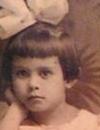Author: Elena Cué
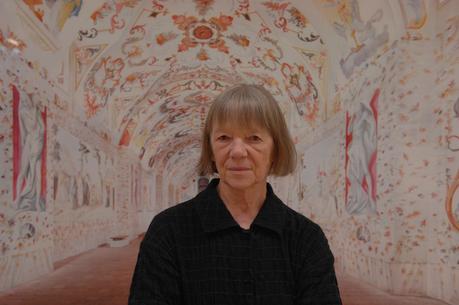
Candida Höfer. Photo: Elena Cué
Luminosity, symmetry and proportion are some of the characteristics of the classical concept of beauty found in the photographs of Candida Höfer (Eberwalde, Germany 1944), to which she adds the existential determination of silence. Her first series in this particular genre depict the ordinary streets of Liverpool and the Turkish communities in Germany and Turkey. From there, Höfer’s work quickly evolved to what are now her most recognizable photographs of the interiors of museums, theaters, libraries, churches, etc., where a stillness that is devoid of time and human presence, and which thus immerses us in silence, also induces the concentration we need to appreciate the spatial vision and beauty of her images. Höfer is a product of the prestigious Kunstakademie Düsseldorf, where she studied photography under Bernd and Hilla Becher, as did other artists such as Thomas Struth, Andreas Gursky and Thomas Ruff. Her photographs of architectural interiors in Europe and America follow the example of the Bechers’ images of industrial exteriors.
Elena Cué: Between 1973 and 1982 you studied at the prestigious Kunstakademie of Düsseldorf where you attended the lectures on photography by Bernd and Hilla Becher. What was the most important teaching you took from that period?
Candida Höfer: Bernd and Hilla's teaching did not come across as teaching in the traditional sense. Both invited us to be open to experiences, to cherish Art in general, not just restricted to photography, to keep our eyes open, to discuss, to remain politically aware.
Does your great interest in architecture also coincide with that period?
In my project about Turkish people living in Germany I had realized that no matter how kindly I was received I felt uncomfortable to intrude. At the same time it was impressive to see how my hosts had created their own environments in their restaurants, shops and living spaces to feel more at home from home. It showed me the importance of the made environment.
In the series you just mentioned, Turks in Germany as well as in Liverpool and Pinball that were some of your first works, you were focusing on portrait photography. Later you abandoned the inclusion of human figures in your works. What did portraits mean to you?
I see my work to some extent as portraits of spaces; this is also why I consider myself not to be an architecture photographer; they would focus on other things.
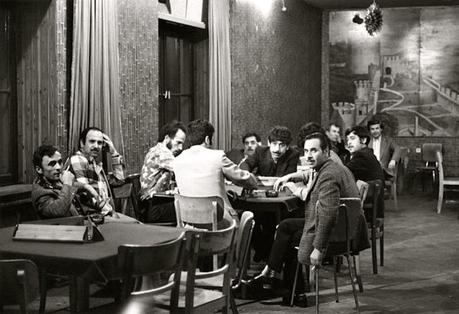
Candida Höfer. Rudolfplatz Köln I, 1975/ 1999. Aus der Serie Türken in Deutschland. Silbergelatineabzug
What made you abandon black and white photography in order to focus on the use of colour?
I tried color photography and compared the results and found color to provide more for my kind of work.
What meaning does the format add to the message of your works?
I think, with regard to my larger format works light, structures, formal repetitions and variations as characteristics of a space are in the center of my interest. As to the more recent, smaller works I examine these elements in a more abstract way.

Teatro Scientifico Bibiena Mantova I, 2010 © Candida Höfer / VG Bild-Kunst,Bonn 2014.
You combine the two ideal concepts of knowledge and beauty. Would you say you have an unconscious strive for perfection within you? Are you a perfectionist?
... an impatient perfectionist, I am afraid. The large formats need much organization and preparation due to the larger camera format. This is one of the reasons why - while still continuing with my large format projects - I am increasingly now using a hand-held camera for the smaller more abstract works to enjoy the freedom from the restrictions of organization.
The technology available to photographers today is constantly evolving; Do you make use of this progress?
I keep an eye on developments, and I get information. I am not technology averse, but I also feel not technology driven.
In your architectural photographs in which people do not feature, this absence is very present due to the necessity of the relationship between people and culture. Did you do this because you did not want any distraction when contemplating your ideal spaces?
The necessity that you are mentioning gets more visible by absence. What I had started as an approach to avoid bothering people while I am working did turn out as a learning process about the presence of the absent.
In your photographs what is most important: the aesthetic, the technique, the idea...
The image.
What is image for you?
I try to give an answer with my images.
What would you say is your most passional moment in your creative process?
Working with the picture taken to turn that picture into an image.
The prominent motifs of your artistic career are the interior spaces and their functionality and the architecture. What can you tell us about your "Psychology of social architecture"?
I am primarily interested in visual relationships within each singular space and the layers of use visible in that space. If over time my aggregated work contributes to broader insights, then that happens so to speak behind my back.
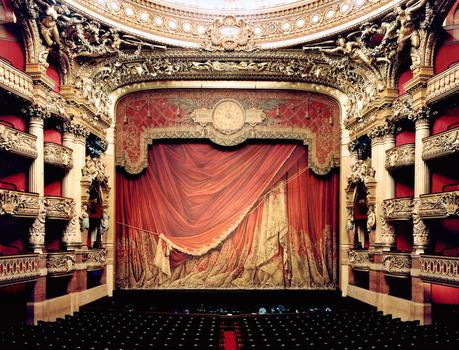
"Palais Garnier Paris XXXI 2005". CreditCandida Höfer/VG Bild-Kunst, via Sean Kelly Gallery
Your photographs posses social, geographical and historical singularities that endow them with character and contrast against a globalized world. Do you feel nostalgia of perfection in art, of the old aesthetic values, of the aspiration to escape vulgarity...?
I think in front of the photographs in their original size (rather than seeing them in a book) what might come across even in the historically charged spaces is the sincerity and clarity and sometimes also the humor of the space that do not invite nostalgia but just show the strength of the present in the space.
In your series Libraries, what is the importance of books to you as the daughter of a journalist?
Books are not only interesting to read but their physical presence, particularly when they are present in large quantities, their order and variation in colors and form I have always found visually attractive as well.
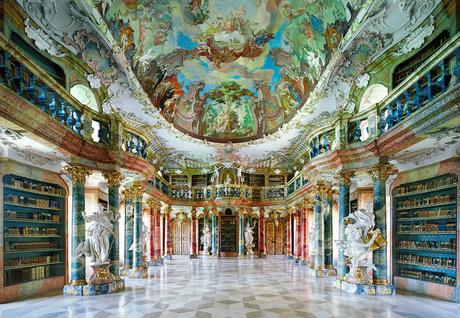
Biblioteca Wiblingen Abbey Alemania
Your exhibition “ The Space, the Detail, the Image" just opened in Helga de Alvear’s Gallery. Could you tell me about it?
As the title indicates I want to show and set in relation my treatment of large spaces, the smaller, more abstract and detail oriented work and projections under the common denominator "image." My very first gallery work (in Dusseldorf in the 1970s), as you may remember, had been a projection ("Turkish People in Germany"). The projection format has always been of interest to me allowing a dynamization of the image without crossing the border to a - for me at least - distinctly different medium, the film. However, the gallery show will also provide an opportunity to show a film not by me, but about the way I work ("Silent Spaces" by the Portugese director Rui Xavier to be shown at the Circulo de las Bellas Artes on 21 January 2016).
Are you looking forward to your next project? Could you reveal any secrets to us?
Upon invitation from my Mexican gallery, I have just spent three weeks in Mexico and I am now working on the material for museum shows both in Mexico and Germany.
- Interview with Candida Höfer- - Página principal: Alejandra de Argos -
